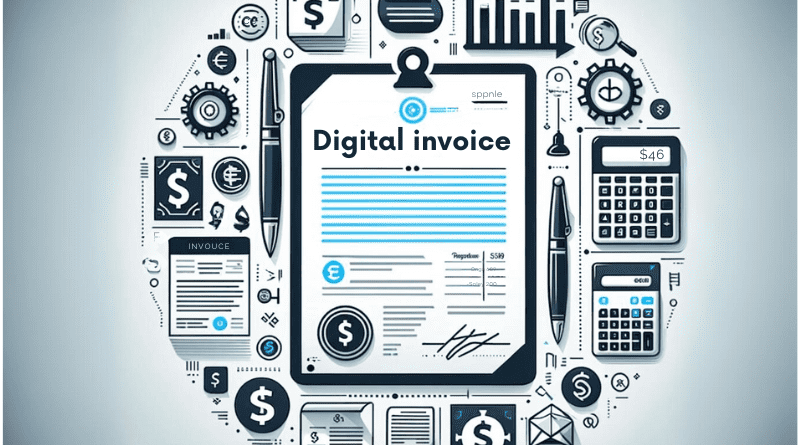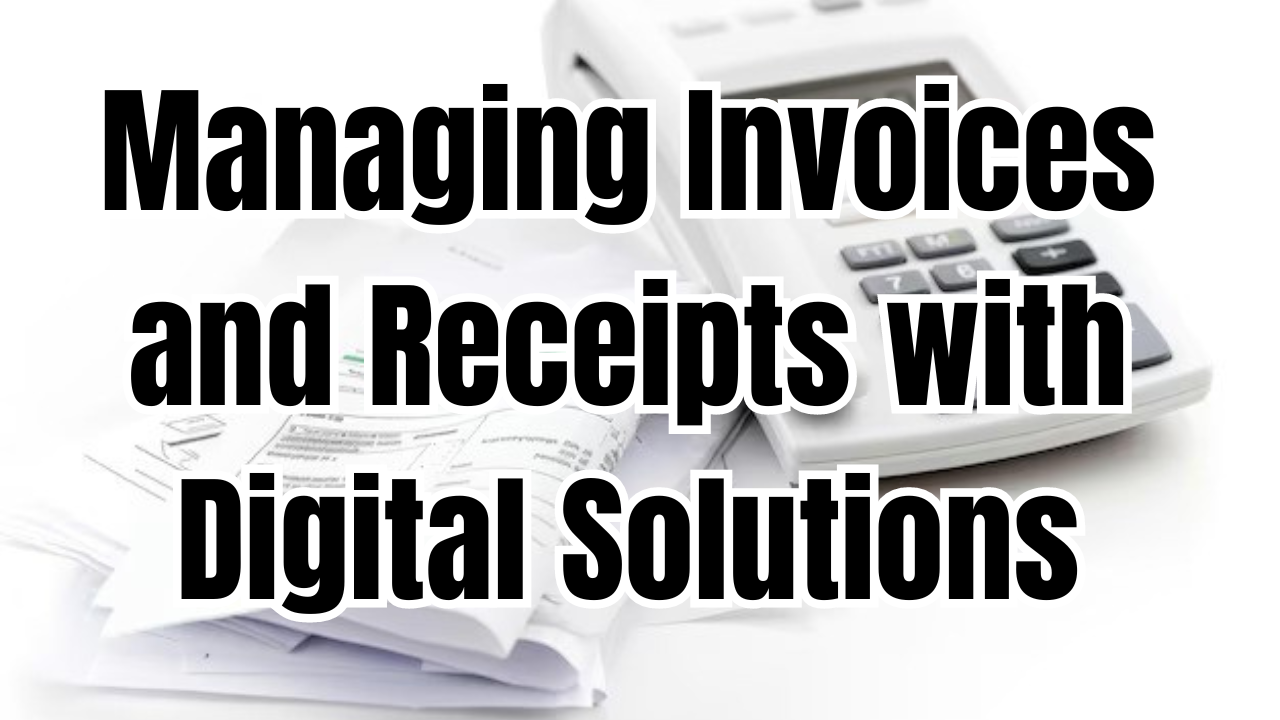Managing Invoices and Receipts with Digital Solutions
Key Takeaways
- Traditional paper-based systems are prone to lost documents and manual errors.
- Digital solutions streamline processes and enhance accessibility and security.
- Implementing best practices improves the management of digital invoices and receipts.
Invoices and receipts are very important for businesses and individuals alike, as they have a direct bearing on cash flow, financial organization, and all other things related to compliance. This accounts for the commercial principle of invoicing, which ensures regular inflows of revenues into the business. It is in the light of managing the receipt that businesses can track expenses and thus better prepare taxes.
Individuals also enjoy the organization, which helps ease personal budgeting and, more importantly, financial planning. Digital solutions make it pretty convenient to handle invoices and receipts. They automate the processes, minimize manual errors, increase document security, and save precious amounts of free time for other strategic activities.
Challenges in Managing Invoices and Receipts: The Traditional Approach

Traditional approaches rely mostly on paper-based systems that create several common challenges in managing invoices and receipts. One major issue is the risk of lost documents. Paper invoices and receipts easily get misplaced or damaged, leading to incomplete records and further complicated tracking and reporting. Moreover, errors in terms of typos, miscalculations, or wrong characterization of expenses are common in data entry. These errors do not only cause financial discrepancies but also problems during auditing and taxation processes.
Another major disadvantage that paper-based systems present is a serious waste of time. Locating and sifting through a pile of paper mail may not be too complicated a task however, tracing down a single invoice or receipt can take quite some time. Such inefficiency often ends with delays in pay cycles, missed deadlines, and finally lost revenue opportunities.
It is precisely in such a scenario that businesses and individuals come under the compulsion of digital solutions for the easy management and smooth handling of invoices and receipts. Digitizing brings down the risks of paper-based records, eliminates errors due to automatic processes, and enhances the efficiency as a whole about processing financial documents.
Reasons for Adopting Digital Solutions for Invoices and Receipt Management Efficiency

Digital solutions make it much more efficient in handling invoices and receipts by automating most of the processes. Automation means that most time spent in dealing with manual entries is cut down, thus letting businessmen and entrepreneurs quickly begin to make their invoices, monitor the payments coming through, and master the records of receipts without much ado.
For instance, most software applications will auto-fill invoice details with previous transactions or even set up recurring invoices for frequent clients, hence lowering the error ratios, thus freeing key time for doing more important things. Thus, bringing PDF editing tools into play as well.
Accessibility
Cloud storage ensures invoices and receipts are easily accessed from anywhere. Storing the documents in the cloud means that a user can retrieve and manage financial records from multiple devices, whether at the office, at home, or even while traveling. Accessibility allows instant collaboration among team members, facilitating immediate updates and feedback about invoices and receipts, thus improving approval and payment efficiency.
Cost Efficiency
It greatly reduces costs to have less dependence on paper, printing, and storage. The business can eliminate the need for large filing cabinets and print fewer invoices to mail or collect from customers. Good digital solutions will also automatically track expenditures and revenues; that information would be highly valued without incurring an additional cost to account for it separately.
Enhanced Security
Digital storage methods are far more secure compared to physical storage. In this regard, the users who store such sensitive financial information on an electronic basis can make use of effective strong passwords, encryption, and access controls as additional means of securing their information. Further, periodic backup will ensure that no documents are lost in case of theft or natural disasters. In the course of this, added security protects financial information and improves compliance with data privacy and record-keeping regulations.
Main Digital Solutions for invoice and Receipts Management

Digital Solution Provider QuickBooks transformed accounting tasks, most especially those about invoicing and receiving receipts. QuickBooks is a leading web-based accounting software whose features are designed with solutions to make the mentioned practices.
Users can send invoices directly from the platform, see payments in real time, and generate financial reports that help analyze cash flow. All of this is automatically done within the platform – send recurring invoices, remind users on time to avoid late payments, and so on. QuickBooks also seamlessly integrates with your bank accounts and payment processors, allowing users to import and reconcile transactions automatically.
Zero also provides mature functionality for managing invoices, including customizable invoices and online payment acceptance. The dashboard given by Xero tracks the outstanding invoices as well as cash flows. Furthermore, Xero’s platform provides a variety of reporting capabilities through advanced reports, which empower businesses to analyze their financial health and make informed decisions.
Mobile Applications
Mobile applications are important tools that can be used to capture receipts and manage invoices on the go. They help keep business owners and individuals organized, even when away from their desks.
Many of the cloud-based accounting platforms, such as QuickBooks or Zero, also have mobile applications. In addition to snapping pictures of receipts, these applications allow a user to create invoices, track expenses, and report their finances from a cell phone. This flexibility allows users to manage their finances effectively, regardless of their location.
Best Procedures when Using Electronic Invoices and Receipts
Below are a few of the best practices:
Update and Back up your digital files periodically
Maintaining accurate and reliable financial records entails updating digital invoices and receipts at regular intervals. Determine the time to update new entries in your records such as updating them daily or weekly. Besides updating, have a good backup procedure. You should back them up through cloud storage solutions or external hard drives to have copies of your files, so in case you experience any type of hardware failure or accidental deletion of the actual file, then you’ll have your files.
Establish a Standardized Naming Convention
Standardizing your naming convention for digital invoices and receipts can mean keeping them adequately organized. Create a system that tracks the most important information: date, name of client or vendor, and document type.
Develop a Workflow for Timely Invoicing
A workflow for your invoicing and receipt acknowledgment will be a huge help in streamlining the whole financial process. Lay down the steps in the generation of an invoice, sending it to clients, and then payment follow-ups. In this, both invoicing dates and due dates for actual payments may also be included. Likewise, you must have systematic processes for acknowledging payments received and corresponding receipts.
The Bottom Line
Proper management of invoices and receipts will ensure a healthy flow of finances in businesses and individuals. Here, digital solutions become an alternative to paper-based systems by transferring the situation into directions toward solutions that could end many challenging problems concerning lost documents, manual inputs, and ineffectiveness in tracing financial transactions.
Ultimately, these help keep the organizational financial health, payment within due times, and informed decisions in moving toward overall business success and personal financial health.







